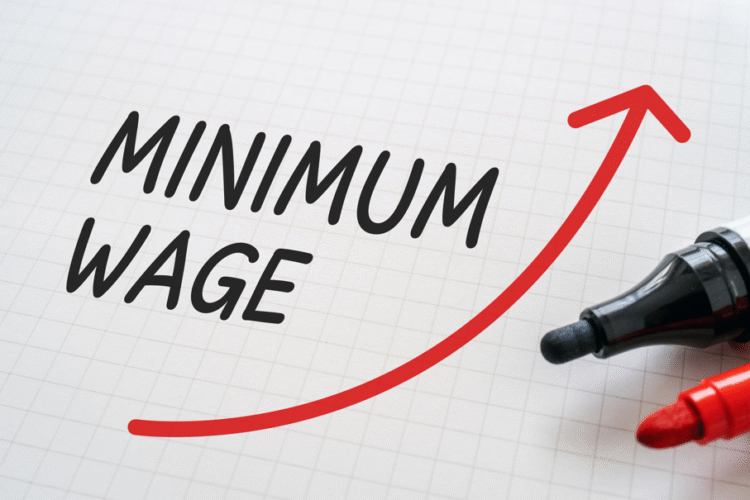The government has set out new plans to overhaul the minimum wage system, with the ambition of delivering a “genuine living wage” and ending what ministers call discriminatory age bands.
The updated remit for the Low Pay Commission (LPC), published today (5 August), brings the goal of a single adult pay rate a step closer and ensures that pay decisions recognise the ongoing high cost of living.
‘Low pay drags down living standards’
The LPC will consult employers, unions, and workers on narrowing the gap between the 18-20 year old national minimum wage rate and the national living wage (NLW). It will also make recommendations on creating a single adult rate.
Currently, younger workers are paid less than older colleagues for the same work. The government said this structure unfairly holds back millions.
Business secretary Jonathan Reynolds said: “Low pay drags down living standards for our workers and in turn hurts our high streets and local businesses.
“This government’s Plan for Change will put money back in people’s pockets, with this new remit marking the next step in considering how we ensure a fair deal for our lowest paid workers while maintaining a competitive economy that boosts businesses and their employees alike.”
Reforms recognise high cost of living
Last year’s decision to include cost of living in the LPC’s remit for the first time led to a record uplift in minimum wage rates, including the largest ever cash increase for apprentices and under-18s, and a £1,400 annual boost for full-time workers on the NLW.
Angela Rayner, the deputy prime minister, said: “We promised to make low pay a thing of the past, and deliver a wage people can live on, and that is exactly what this government is determined to deliver.
“This remit is the next milestone in our plan to get more money in working people’s pockets, raise living standards in every part of the UK, and get our economy growing.”
Chancellor Rachel Reeves added: “We are delivering on our promise to make sure every worker receives a fair wage. Fair pay which supports working families is integral to our Plan for Change, because when working people are properly rewarded with more money in their pockets, businesses thrive and our entire economy benefits.”
Balancing fairness with business need
The LPC, an independent body made up of employer, worker and independent representatives, will continue to weigh the impact of reforms across different sectors. Baroness Philippa Stroud, commission chair, said the pay body would continue to use direct evidence from stakeholders.
“Our recommendations on the minimum wage are always finely balanced. More than ever, it is important that we draw on first-hand evidence from those affected by our decisions. I look forward to working with the rest of the commission over the autumn to reach a shared view on this evidence and deliver our advice to the government in October,” she said.
‘Right to raise the floor’
TUC general secretary Paul Nowak said: “Boosting the minimum wage isn’t just good for workers – it’s good for business too. When low-paid workers have more money in their pockets they spend it locally – supporting shops, cafés and high streets.
“That’s why the government is right to set out its ambition to raise the floor of the minimum wage and end the outdated and unfair youth rates.
“A bolder, more ambitious minimum wage isn’t a risk. It’s the next step in building a fairer, stronger economy where hard work is properly rewarded.”
LPC updates NLW 2026 projections
LPC said the remit confirms the government’s commitment that the NLW should not fall below two‑thirds of UK median earnings for eligible workers. The commission is required to consider the cost of living, inflation forecasts for April 2026–27, labour market conditions, business competitiveness, and wider economic factors before making its recommendations.
As a result, the LPC’s central estimate is that the NLW would need to rise to £12.71 (a 4.1 percent increase) to meet the commitment. The projected range runs from £12.55 to £12.86. This is higher than the previous estimates published in May 2025, when the central estimate was £12.65 (3.6 percent) with a range of £12.50 to £12.80.
The increase reflects stronger‑than‑expected average wage growth so far this year and higher forecasts for 2025. If wage growth continues to outperform forecasts, the central estimate and range may rise further, the LPC said. The commission’s current assumptions are based on year‑on‑year wage growth of 5.1 percent in May 2025, with growth forecasts of 3.9 percent in Q4 2025 and 3 percent in Q4 2026.
The LPC emphasised that the figures are only indications as their recommendations are not formulaic and must take account of prevailing economic conditions. Final advice will be provided to the government by the end of October 2025.
Current Minimum Wage Rates (from 1 April 2025)
- National Living Wage (21 and over): £12.21 (+£0.77, 6.7 percent)
- 18–20 Year Old Rate: £10.00 (+£1.40, 16.3 percent)
- 16–17 Year Old Rate: £7.55 (+£1.15, 18 percent)
- Apprentice Rate: £7.55 (+£1.15, 18 percent)
- Accommodation Offset: £10.66 (+£0.67, 6.7 percent)
The LPC will deliver its recommendations for April 2026 rates to the government in October.












